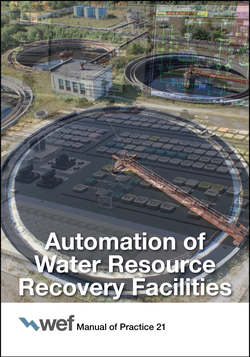Читать книгу Automation of Water Resource Recovery Facilities - Water Environment Federation - Страница 221
4.10.2 Most-Open Valve Control
ОглавлениеMost-open valve (MOV) control is commonly used to control flow or pressure to several areas via multiple valves or gates. The fluid division between each path is determined by the pressure loss through each valve and the remainder of the path. Each valve must be at an operational position (% open) that is not too high so that it can control, by opening or closing, a finite amount. However, if all of the valves’ positions are too low, it will result in inefficient energy use as the system uses energy to overcome pressure losses across each valve.
For several valves, the position of each valve will typically be different. The critical position is MOV, which needs to be controlled. In a well-designed system with good control valves, this MOV position setpoint may be as high as 95% open. If it were any higher than this, it could not open further to obtain more flow. Some valves or gates have an operational range much smaller. In some instances, the valve may achieve full flow at about 50% open and opening further will not increase flow or decrease pressure. In that instance, the MOV position setpoint might be 45% open.
The MOV position setpoint is typically a secondary or cascade control strategy. The primary strategy is to control the flow or pressure for each path. Typically, the MOV position setpoint is controlled to maintain it within an acceptable range and no further control occurs if the position remains within this range. For example, the MOV setpoint may result in no control actions if it is maintained between 80 to 90% open. In instances where there are several valves, the MOV may not be one specific valve but may represent the average of two or more of the MOVs.
